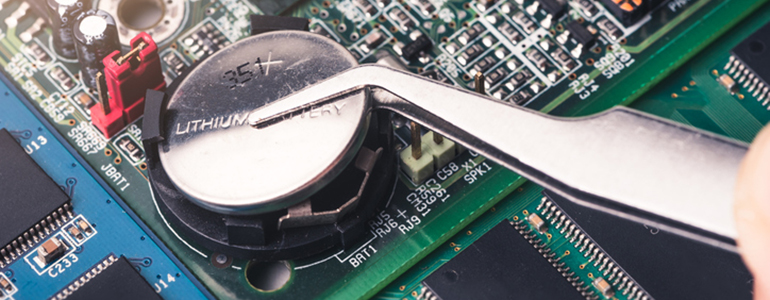Transportation of Lithium Batteries - Part 2

03 May 2019
Going Beyond the Basics of UN 38.3
UN model regulations on dangerous goods are adopted by regulators in member countries. Several portions focus specifically on the transport of lithium batteries, both on their own and installed within devices. The key components of the regulation include: identifying/classifying lithium batteries; design guidance/conditions; shipping/ packaging of batteries; exemptions/ exceptions and testing/ qualification requirements.
There are four classifications for these batteries, based on whether they are lithium or lithium-ion and how they are shipped.
- UN 3090 for lithium batteries and UN 3480 for lithium-ion batteries apply to: cells shipped alone, batteries shipped alone, consignment of cells and batteries, modules or other incomplete battery sub-assemblies, powerbanks, powerpacks, and batteries shipped in a separate package from the device they power (even if the device and batteries are on the same consignment or shipment). Lithium batteries shipped alone must be set at or below 30% state of charge (SOC) for air shipment. To ensure you meet this requirement, document the method used, and how the shipment was verified.
- UN 3091 for lithium batteries within a device and UN 3481 for lithium-ion batteries within a device apply to devices with their batteries installed; devices packed with their battery in the same package, though the battery is not installed in the product; up to two spare batteries shipped in the same package as the device (i.e. one installed, two spares or none installed, two spares).
With such a focus on transporting these batteries, naturally the industry may wonder how batteries can be transported for testing. Samples and prototypes can be shipped as full Class 9 dangerous goods shipments, or may be shipped less restrictively, with competent authority approval, including by air.
Recent updates to the regulation have included new labels to better, yet more simply, illustrate the risk of fire associated with the batteries in the package (individually or within a device), as well as a separate Lithium battery version of the Class 9 placard. Passenger aircraft restrictions have also been updated to prohibit transport of lithium-ion cells/batteries as cargo on passenger planes (this does not apply to batteries in devices), requiring these items to be labeled for cargo aircraft only.
With these requirements, it is important to remember to get or create a test report summary, based on successful completion of UN 38.3 testing. These test report summaries must be available from the shipper upon request. They do not need to be included in shipments, however it may be wise to include when further transportation will occur. Keep in mind the new label requirements and the difference between the requirements for batteries alone versus those in the device. For more insights, download our on-demand webinar.
This is the second in a two-part series on Un 38.3. Read the first entry for the basics of the standard, here.

Rich Byczek,
Global Director of Transportation Technologies
Rich Byczek is the global technical lead for electric vehicle and energy storage at Intertek. He has more than 20 years of experience in product development and validation testing, and is an expert in the areas of energy storage, audio equipment and EMC. Rich sits on several SAE, IEC, UL and ANSI standards panels.